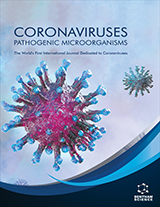
Abstract
Background: The Indian state of Uttarakhand, also known as "Dev Bhoomi" or the Abode of Gods, is snuggled in the lap of the Himalayas. It is endowed with an abundant natural hilly environment and occupies more people in total than Israel, Switzerland, Hong Kong, etc. In this report, we look closely at the impact of COVID-19 on both high land/ hilly and low land/ plain bhabar zones across the state.
Methods: The data was retrieved from the Uttarakhand Government COVID-19 health bulletin for 12 months using the Python command line. The data analysis covers percentage positivity/COVID- 19 positivity rate, recovery, deceased and doubling rate, along with a detailed statistical analysis.
Results: In the first wave, low-land- inhabitants residing in 4 districts, Dehradun, Haridwar, U. S. Nagar and Nainital, were found more vulnerable, with a peak positive case during the 21st – 26th week. On the other hand, the districts with exclusive hilly terrains, including Chamoli, Pauri Garhwal, and Rudraprayag, were found to be the least susceptible and reported a high number of positive cases between the 30th and 31st week. The highest recovery rate was found to be in the hilly district of Rudraprayag. The multiple regression with confirmed cases was explained in relation to deceased, recovered, other, and tested variables (R2 adj= 0.99). The analysis also revealed a very high doubling rate from the last week of May to the first week of Jun 2020.
Conclusion: The reduced number of COVID-19 cases in high-altitude hilly districts may be associated with factors such as enhanced ventilation, improved arterial oxygen transport, and increased tissue oxygenation. The findings from this study offer insights that can contribute to future pandemic prevention efforts. Summarising the current study, we have suggested 5-point solutions for preventing the next pandemic. It's important to note that while this study suggests a potential link between these factors and lower COVID-19 cases, further research is needed to establish a conclusive connection.
Keywords: COVID-19, SARS-CoV-2, healthcare, mitigation policies, statistical analysis, arterial oxygen transport.
[http://dx.doi.org/10.1016/j.cellsig.2020.109721] [PMID: 32711111]
[http://dx.doi.org/10.1038/s41579-022-00713-0] [PMID: 35354968]
[http://dx.doi.org/10.1080/21645515.2021.1995283] [PMID: 34856868]
[http://dx.doi.org/10.1016/j.drup.2021.100794] [PMID: 34991982]
[http://dx.doi.org/10.1016/j.fct.2021.112160] [PMID: 33823228]
[http://dx.doi.org/10.1101/2021.09.07.21263196]
[http://dx.doi.org/10.1016/j.resp.2020.103443] [PMID: 32333993]
[http://dx.doi.org/10.1007/s41027-020-00291-w] [PMID: 33204055]
[http://dx.doi.org/10.1016/j.cyto.2011.01.015] [PMID: 21324713]
[http://dx.doi.org/10.1113/jphysiol.2006.122689] [PMID: 17095558]
[http://dx.doi.org/10.3390/ijms18071519] [PMID: 28703764]
[http://dx.doi.org/10.1186/s13568-020-01028-0] [PMID: 32415548]
[http://dx.doi.org/10.1101/2021.09.09.21263347]
[http://dx.doi.org/10.1016/j.sjbs.2020.11.067] [PMID: 33262677]
[http://dx.doi.org/10.1038/s41467-021-23866-7] [PMID: 34127665]
[http://dx.doi.org/10.1016/j.jiph.2021.06.018] [PMID: 34245973]
[http://dx.doi.org/10.1183/16000617.0242-2020] [PMID: 33568525]
[http://dx.doi.org/10.1136/postgradmedj-2020-139065] [PMID: 33184146]
[PMID: 25110611]
[http://dx.doi.org/10.1101/2021.06.21.21259268]
[http://dx.doi.org/10.33182/ml.v18i3.957]
[http://dx.doi.org/10.4269/ajtmh.20-0812] [PMID: 32783794]
[http://dx.doi.org/10.3390/su13020808]
 8
8 1
1




























